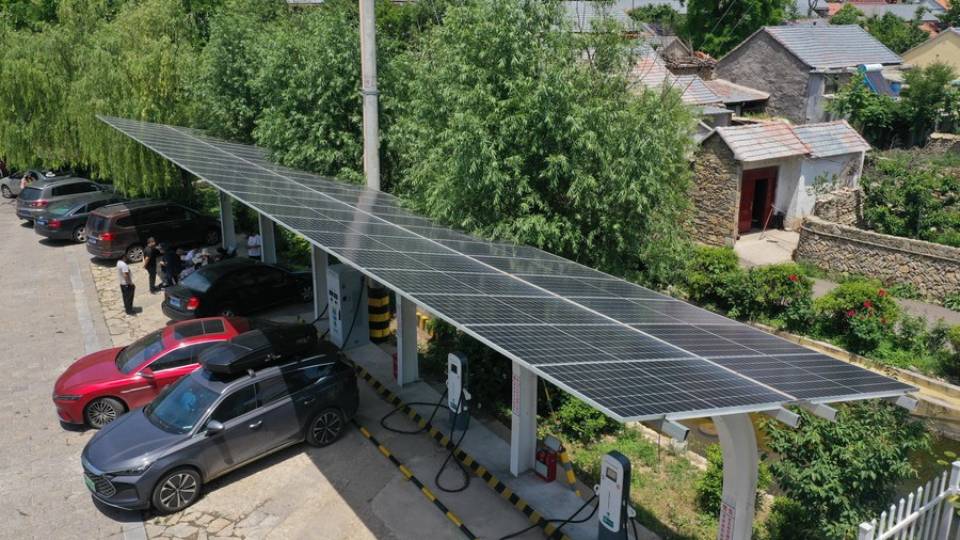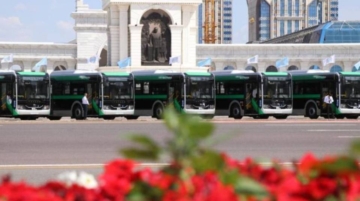
Like its Central Asian neighbors Kazakhstan and Uzbekistan, Kyrgyzstan is rapidly emerging as a major export market for Chinese automakers, both for traditional and electric vehicles. This surge comes amid tightening restrictions in Western markets on Chinese exports, pushing Chinese manufacturers to deepen their presence across Eurasia.
In 2023, Kyrgyzstan imported an astonishing 79,000 vehicles, marking more than a forty-fold increase compared to 2022. A substantial share of these were electric vehicles, supported by the Eurasian Economic Union’s (EAEU) zero customs duties on electric vehicle imports from nonmember countries.
With a population of only about 7.2 million people, such large-scale imports raise questions about domestic demand. Like its neighbors, Kyrgyzstan has shown strong interest in promoting a green transition — but the scale of Chinese vehicle imports to the country suggests a more complex dynamic at play.
Re-Export Hub as a Strategic Advantage
Beyond green transition goals, Kyrgyzstan’s growing role as a reexport hub distinguishes it from other Central Asian countries. Its strategic location and access to markets within the EAEU have turned the country into a crucial gateway for redistributing Chinese vehicles, particularly to Russia, where demand remains high.
The data clearly reflect this reality. Although Kyrgyzstan imported around 79,000 vehicles in 2023, the majority of these cars were ultimately exported to Russia, with Kyrgyzstan reexporting about 60,000 vehicles during the same year. Kyrgyzstan’s strategic position as a reexport hub is rooted in its EAEU membership, which has historically provided notable customs advantages.
Duties in Kyrgyzstan are considerably lower than those in Russia, allowing importers to clear Chinese vehicles in Bishkek and then move them duty-free across the EAEU market. This regulatory flexibility has positioned Kyrgyzstan as an entry point for Chinese automakers seeking to access Russian consumers without facing direct trade barriers.
As a result, Kyrgyzstan has emerged as the second-largest exporter of cars to Russia, following China itself. Yet Beijing’s growing engagement with Kyrgyzstan extends beyond short-term reexport gains. Chinese companies are increasingly looking to invest in Kyrgyzstan’s automotive sector to establish a more permanent manufacturing presence.
Firms such as Jiabo, Hi-tech New Energy Auto Company (a subsidiary of Sinomach Corporation), and Eurasia Industry (Liaoning) have already expressed interest in building electric vehicle assembly plants in the country.
These ambitions are gradually materializing. One notable example is the Hubei Zhuoyue Group, which has launched a $115 million project to construct an electric vehicle assembly plant in Sokuluk, west of Bishkek.
For China, investing in Kyrgyzstan supports its broader strategy of export diversification and deepens its foothold in the EAEU market. The Hubei Zhuoyue Group’s plan to produce up to 80,000 vehicles annually demonstrates that the initiative primarily targets regional consumers rather than Kyrgyzstan’s limited domestic market of 7.2 million people.
This approach allows Beijing to maintain export growth while navigating around regulatory barriers through assembling plant in Kyrgyzstan. Moreover, China’s growing market share in the Kyrgyz automobile sector has come partly at the expense of Western competitors. U.S. car imports to Kyrgyzstan, for instance, fell by 56% in the first 11 months of 2024, while China solidified its position as the country’s leading automobile supplier.
Beyond the typical benefits in the realms of employment, technical skills, and aiding green transition goals, these developments carry significant economic advantages for Kyrgyzstan. The establishment of assembly plants not only reinforces its role as Central Asia’s reexport hub but also creates new sources of revenue essential for long-term economic development. These gains are particularly important as Bishkek continues to manage its growing debt obligations to Beijing.
Increased adoption of electric cars could also reduce the country’s dependence on oil imports from Russia and help address the severe air pollution problem in Bishkek, which consistently ranks among the world’s most polluted cities.
Risks and Vulnerabilities
While serving as a reexport hub provides Kyrgyzstan with significant short-term economic gains, this model also carries substantial long-term risks, particularly in its relationship with China. The country’s limited industrial capacity and weak localization mean that its economic position is inherently fragile, leaving it highly exposed to external political and regulatory shifts. Recent developments involving Russia have vividly illustrated this vulnerability.
In April 2024, the Russian government introduced amendments imposing additional utilization fees on vehicles imported through EAEU member states, including Kyrgyzstan. The measure specifically targeted a loophole that had enabled reexporters to clear cars in Kyrgyzstan and then move them into Russia while avoiding the higher tariffs and fees applied to direct imports.
The consequences were immediate and severe. In 2023, Kyrgyzstan was Russia’s second-largest supplier of cars, accounting for about 8 percent of its total automotive imports. Yet by January 2025, that share had plummeted to less than 2 percent, a direct result of the new Russian policy.
This case exposes two fundamental vulnerabilities in Kyrgyzstan’s current economic structure. First, the country’s reexport-dependent economy remains at the mercy of its larger neighbors’ policy shifts. A single regulatory change in Moscow can cripple one of Bishkek’s most dynamic export sectors.
Second, acting mainly as a bridge for Chinese goods to Russia risks trapping Kyrgyzstan within a narrow economic corridor shaped by the interests of Beijing and Moscow. Such dependence limits Kyrgyzstan’s strategic autonomy and its capacity for sustainable economic diversification.
The Russian tariff episode makes clear that without meaningful domestic production and technological capacity, the gains from reexport remain temporary and highly vulnerable to geopolitical shifts.
The Path Forward
In order to reduce its vulnerability and fully benefit from cooperation with China, Bishkek can prioritize the localization of EV components as a central part of its negotiations with Beijing.
Although China has been reluctant to share critical technologies, Kyrgyzstan could still focus on localizing basic and mid-level EV components, such as wiring systems, battery casings, or vehicle assembly processes. This approach would not only stimulate domestic economic development but also enable Kyrgyzstan to diversify its export base within the Eurasian Economic Union and beyond.
A localization-centered partnership would also redefine the nature of China–Kyrgyzstan economic relations. Rather than serving merely as a transit corridor for Chinese goods, Kyrgyzstan could position itself as part of China’s broader regional production network.
Such a shift would align with both Beijing’s long-term industrial strategy and Bishkek’s goal of building a more resilient, self-sustaining economy capable of generating value through production rather than reexport.
Yunis Sharifli is CGSP’s Non-Resident Fellow for Central Asia.







